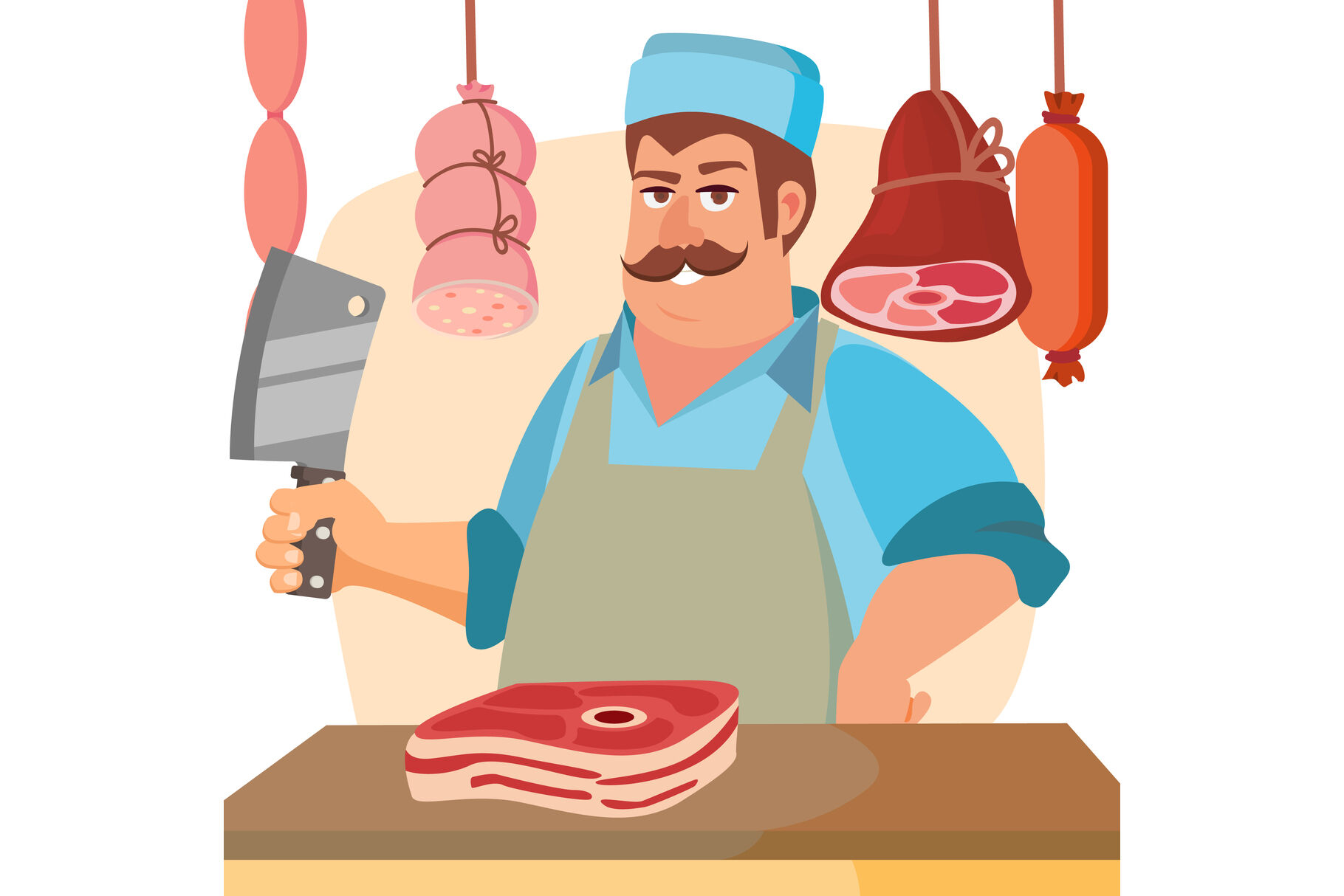Exploring the convenience of using meat market delivery for weekly meals.
Everything About Meat Markets: Understanding Their Duty in Sustaining Neighborhood Farmers
Meat markets offer a vital function in neighborhood economic situations by connecting the gap between consumers and farmers. They offer a straight sales channel that enhances the quality and quality of meat products. Past benefit, these markets play a significant duty in promoting lasting agriculture and sustaining the source of incomes of local farmers. The ramifications of this partnership expand better than one may expect, elevating concerns regarding sourcing practices and consumer options.
The Significance of Meat Markets in Regional Economic Climates
Commonly overlooked, meat markets play a vital duty in reinforcing regional economies by sustaining farmers and creating work. These establishments work as essential intermediaries, offering a platform for regional producers to market their products directly to customers. By buying in your area sourced meat, customers add to the sustainability of nearby farms, guaranteeing their viability and advertising farming diversity.
Furthermore, meat markets develop employment possibility, ranging from sales and butchers personnel to monitoring and logistics roles. This job production stimulates the regional economic climate, promoting a sense of area as citizens involve with their area businesses.
On top of that, meat markets typically attract clients who look for top quality, fresh items, which can bring about increased foot website traffic and sales for bordering services. Overall, the visibility of meat markets can considerably boost neighborhood financial wellness, strengthening connections in between farming and community well-being while sustaining the source of incomes of farmers.

Linking Customers and farmers: How Meat Markets Operate
Meat markets serve as essential centers that link regional farmers straight with consumers, promoting a structured supply chain that benefits both parties. By sourcing items from nearby farms, these markets guarantee that consumers obtain fresh, high-quality meat while sustaining neighborhood agriculture. The operation of meat markets entails establishing partnerships with farmers, often allowing them to display their items and share their farming practices.
Subsequently, customers gain accessibility to a diverse selection of meats that reflect regional tastes and preferences. Transparency is a vital aspect of these markets, as consumers are typically supplied with info about the taking care of and sourcing of the meat. This straight link promotes trust and commitment in between customers and farmers, boosting community connections. In addition, meat markets often participate in marketing activities, such as farm-to-table occasions, which better enhance the consumer's experience and awareness of local farming techniques.
Advertising Sustainable Farming Practices
Advertising lasting agriculture methods is crucial for the future of food manufacturing and environmental health. By concentrating on honest farming techniques, motivating biodiversity, and promoting for neighborhood and seasonal sourcing, the farming field can greatly minimize its eco-friendly footprint. These techniques not only support the ecosystem however additionally foster a healthier partnership between customers and farmers.

Moral Farming Strategies
A growing number of farmers are taking on honest farming methods to improve sustainability and decrease ecological impact. These approaches concentrate on responsible land management, minimizing making use of chemical plant foods and pesticides, and embracing natural techniques. Methods such as crop rotation, cover chopping, and agroforestry not just improve dirt wellness but likewise promote biodiversity. Furthermore, farmers are significantly prioritizing pet welfare by providing pasture-based systems and minimizing arrest methods. By prioritizing regional sources and neighborhood involvement, honest farming cultivates a resistant farming system. This change not only benefits the atmosphere but also reinforces the link in between farmers and consumers, motivating educated getting choices that support sustainable methods. Ultimately, these strategies offer to develop an extra sustainable future for agriculture.

Biodiversity and Community Health And Wellness
While lots of farming practices have traditionally focused on return over environmental equilibrium, an expanding recognition of biodiversity's relevance has actually arised among customers and farmers alike. Biodiversity improves ecosystem resilience, supporting dirt wellness, pest control, and pollination. By integrating diverse crops and livestock, farmers can develop much more secure communities that minimize reliance on chemical inputs and enhance total performance. Lasting farming methods that promote biodiversity not only secure all-natural environments yet likewise contribute to the long-term practicality of farming. Meat markets play an important function in this standard change by supporting for neighborhood items that focus on environmental health. By selecting to resource from farms that embrace biodiversity, consumers can support methods that guarantee a lasting future for farming and the environment.
Seasonal and Local Sourcing
Local and seasonal sourcing not just boosts the freshness of food but likewise sustains sustainable agriculture methods that profit both farmers and customers. By prioritizing neighborhood meat markets, consumers can attach directly with farmers, fostering a sense of area and trust. This design decreases the carbon impact related to long-distance transportation, advertising ecological sustainability. Farmers benefit from even more steady incomes and a trusted market for their products, which urges accountable farming practices. Additionally, seasonal sourcing encourages diverse agricultural practices, allowing farmers to revolve plants and livestock, therefore maintaining soil wellness and biodiversity. Overall, this method develops a more resilient food system that straightens with the values of community, quality, and sustainability assistance, enhancing the essential web link in between consumers and regional agricultural systems.
The Role of Transparency in Sourcing Meat
What elements contribute to consumer count on meat items? Transparency in sourcing is an essential component. Consumers progressively inquire regarding where their meat originates from, consisting of the ranches and practices associated with elevating the animals. Meat markets that prioritize openness often present clear labeling, describing the resource and production techniques utilized. This visibility cultivates self-confidence and enables consumers to make informed choices.
Furthermore, transparent techniques can consist of farm check outs, collaborations with local farmers, and sharing tales concerning the animals and their settings. As consumers end up being more educated concerning food sourcing, they often tend to choose meat products from providers who loom with details. This need for openness not just enhances customer trust but also urges meat markets to develop moral connections with local farmers. Eventually, openness sustains a hop over to here cycle of accountability, benefiting both customers and manufacturers in the meat industry.
Sustaining Animal Welfare Via Resident Sourcing
Supporting pet well-being through local sourcing depend upon the fostering of moral farming methods. By prioritizing transparency in sourcing, customers can make educated selections that reflect their values. Furthermore, area interaction campaigns cultivate a stronger link between customers and farmers, improving the total commitment to gentle therapy of animals.
Moral Farming Practices
While consumers increasingly focus on honest factors to consider in their food selections, regional sourcing uses a feasible course to sustaining animal welfare. Moral farming techniques highlight humane treatment of animals, ensuring they have sufficient space, appropriate nutrition, and accessibility to exterior settings. Regional ranches frequently follow these criteria, as they are extra answerable to their consumers and areas. By picking to resource meat in your area, customers can sustain ranches that focus on gentle and sustainable practices over industrialized techniques, which often endanger pet wellness. This link cultivates a much deeper understanding of food manufacturing and urges accountable consumption. Inevitably, local sourcing encourages consumers to make enlightened options that align with their worths pertaining to honest therapy of pets in the food sector.
Transparency in Sourcing
Just how can transparency in sourcing improve customer trust fund in regional meat markets? By pasture raised pork providing clear details about the origins of their items, local meat markets promote a feeling of responsibility and stability. When consumers recognize the sourcing practices, including the treatment of animals and farming techniques, they are most likely to feel great in their investing in choices. This openness enables customers to align their worths with the organizations they support, recognizing they are adding to ethical pet welfare and lasting practices. In enhancement, neighborhood meat markets can display partnerships with nearby ranches, highlighting neighborhood assistance and strengthening a favorable partnership between consumers and manufacturers. Ultimately, openness in sourcing not just builds depend on however also motivates informed selections among consumers.
Area Interaction Initiatives
What duty do community interaction initiatives play in advertising animal welfare via local sourcing? These efforts markedly improve recognition and understanding of honest farming practices amongst consumers. By promoting connections between regional farmers and neighborhood participants, meat markets can highlight the value of humane therapy of animals. Educational workshops and farm trips allow consumers to witness firsthand the problems under which animals are increased, reinforcing the worth of neighborhood sourcing. Additionally, area occasions, such as farm-to-table dinners, highlight the relationship in between pet welfare and lasting methods. Through these interactions, customers develop count on regional meat markets, encouraging them to support honest fostering a society and sourcing of liable usage that prioritizes pet well-being in the area.
Health And Wellness Conveniences of Finding Local Meat Products
Picking regional meat items supplies many health benefits that can considerably improve general well-being (meat markets edwardsville il). One considerable benefit is the minimized time between farm and table, which usually causes fresher meat with higher dietary worth. Regional meats have a tendency to be without damaging chemicals and ingredients generally discovered in factory-farmed options, contributing to a cleaner diet regimen
In addition, regional farmers usually focus on humane and sustainable methods, causing much healthier pets that generate better-quality meat. Grass-fed and pasture-raised animals, regularly found in regional markets, usually have higher levels of omega-3 fats and reduced degrees of hydrogenated fats contrasted to their barnyard counterparts.
In addition, sustaining neighborhood meat items cultivates neighborhood health by making certain that customers have accessibility to risk-free and sensibly sourced food. By choosing neighborhood, individuals not only nourish themselves however additionally add to the wellness of their community and setting.
Making Enlightened Choices at the Meat Market
When traversing a meat market, recognizing the essential variables that influence top quality and sourcing can equip customers to make educated selections. Consumers ought to prioritize local products, which typically come from farms with sustainable methods. Acknowledging labels such as "grass-fed" or "organic" can also assist decisions, as these often suggest higher welfare standards and dietary advantages.
Engaging with the butcher is important; well-informed staff can supply understandings right into the sourcing of their meats and suggest cuts that match various food preparation techniques. Consumers are encouraged to ask about the ranch's techniques, consisting of pet therapy and feed.
Furthermore, taking a look at the meat's color and appearance can expose freshness and high quality. Lean cuts need to show up try this website moist and brilliant, while fatty cuts ought to have a marbled appearance. By combining these practices, consumers can confidently choose meats that straighten with their values and assistance regional farming.
Frequently Asked Questions
What Kinds of Meat Are Most Commonly Cost Local Meat Markets?
Local meat markets commonly provide a selection of meats, including beef, poultry, lamb, and pork. These facilities usually include specialty cuts, sausages, and in your area sourced items, dealing with varied cooking choices and consumer needs.
Exactly How Can I Discover a Meat Market Near My Place?
To find a meat market nearby, one can use online maps, search engines, or local directory sites - meat market delivery. Additionally, asking next-door neighbors or pals for recommendations commonly generates beneficial insights right into the finest local options available
Exist Seasonal Variations in Meat Availability at Meat Markets?
Seasonal variants in meat accessibility at meat markets often happen, affected by factors such as neighborhood farming techniques, pet reproduction cycles, and seasonal demand. This can influence the types and quantities of meat provided throughout the year.
Do Meat Markets Deal Unique Promotions or Discount Rates for Mass Purchases?
Meat markets commonly offer unique promotions and discounts for bulk purchases. This technique urges consumers to purchase larger amounts while allowing the markets to handle inventory properly, benefiting both consumers and the organization monetarily.
Can I Ask For Specific Cuts of Meat at the marketplace?
Yes, consumers can often ask for details cuts of meat at the market. Several butchers are ready to accommodate unique orders, making certain that patrons receive the exact cuts they desire, customized to their choices.
By sourcing items from nearby farms, these markets ensure that customers receive fresh, premium meat while sustaining neighborhood farming. By focusing on neighborhood meat markets, customers can connect directly with farmers, cultivating a feeling of area and trust. How can transparency in sourcing improve customer depend on in regional meat markets? Regional meat markets usually provide a selection of meats, including beef, hen, lamb, and pork. Seasonal variants in meat schedule at meat markets frequently take place, influenced by variables such as neighborhood farming practices, pet breeding cycles, and seasonal need.